|
Is The Covid-19 Pandemic A Black Swan Or A Gray Rhino Event?
Part 3: How do we mitigate the impact of gray rhino events in the future?
Sagar Dhara
The Dutch sea captain Willem de Vlamingh never imagined in his wildest dreams that black swans could exist. He never saw or heard of one in Europe. In January 1697 he and his crew sailed up a river, later named Swan River, in Southwestern Australia to explore it. And much to their utter amazement they became the first Europeans to see black swans.
“Black swan” events are extremely rare and highly improbable events. They share three characteristics: 1) they are unpredictable, 2) they have a massive impact, 3) post the event, we concoct an explanation that makes it appear less random and more predictable.
Is the COVID-19 outbreak a black swan event? Here are three reasons why it is not an unpredictable event.
First, there have been more than a dozen serious epidemics, many of them worldwide, in the last 100 years. The Spanish flu and smallpox killed 50 million people each. Eighteen million Indians died of Spanish flu. HIV killed 30 million people. The Asian flu and Hong Kong flu killed at least a million people each. But they have faded quickly from public memory.
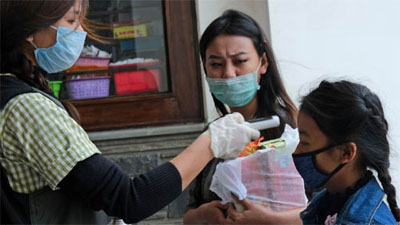
Second, a paper written by four Chinese scientists titled, Bat Coronaviruses in China, published on 2 March 2019, specifically warned,“it is highly likely that future SARS- or MERS-like coronavirus outbreaks will originate from bats, and there is an increased probability that this will occur in China. Two bat origin CoVs caused large-scale epidemics in China over fourteen years, highlighting the risk of a future bat CoV outbreak in this nation. Therefore, the investigation of bat coronaviruses becomes an urgent issue for the detection of early warning signs, which in turn minimizes the impact of such future outbreaks in China.” The Chinese government, which funded this study through its science academies, did not heed the warning it carried.
Third, Tedros Adhanom Ghebreyesus, Director General of WHO, speaking at the World Government Summit, Dubai on 12 February 2018, warned the world, “A devastating epidemic could start in any country at any time and kill millions of people because we are still not prepared. The world remains vulnerable.” The world heard him but did not listen to him.
COVID-19 is not a black swan event. It is a “gray rhino” event, one that is a highly probable and with a potentially large impact. Gray rhino events can be seen in advance because of their size and the early warning they give. Yet, they are ignored. India has had many big gray rhino events in the past.
Recent Indian gray rhino events
India’s record of handling gray rhino events is poor and leaves doubts about how it will handle the coronavirus outbreak. There have been occasions though when it has rolled up its sleeves and done a particularly good job like in the Machilipatnam cyclone or what Kerala is doing now to control COVID-19.
1984 Bhopal gas tragedy: Union Carbide made Sevin, a carbamate group pesticide, in its Bhopal plant. Soon after the plant went into production, Sevin lost market space to the next generation pesticides and the company slipped into losses. Consequently, safety and environmental management standards in the plant declined.
Between 1981-84, the plant had a series of accidents (see Box 6). This prompted journalist Raj Kumar Keshwani to write three articles lamenting on the plant’s poor safety conditions, and warning Bhopal that it was on the brink of a disaster. A state government minister responded saying, “The Carbide plant is not some small pebble that can be picked up and put elsewhere.”
Forty-two tonnes of Methyl Isocyanate (MIC) leaked on the cold winter night of 2 December 1984, killing about 8,000 persons immediately. Another 17,000 died subsequently of chronic toxic effects.
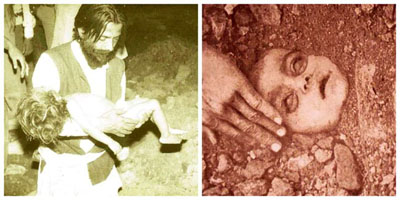
Immediate aftermath of the 1984 Bhopal gas tragedy
1999 Ersama cyclone: Odisha is hit by a severe cyclone almost every year, and by a super cyclone once every few years. A super cyclone hit Ersama block in coastal Orissa on 29 October 1999. Three 10-metre high storm surges swept everything in their path for up to 20 km inland, killing about 50,000 persons.
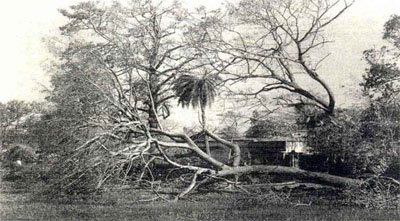
Destruction caused by the 1999 Ersama cyclone
2004 Indian Ocean earthquake and tsunami: Indonesia is frequently rocked by earthquakes and the offshore ones sometimes generate tsunamis. On 26 December 2004, a 9.1 magnitude offshore earthquake near Sumatra, Indonesia generated tsunami waves that rose to 9 m before they hit coasts of 14 countries along the Indian Ocean rim, and wreaked enormous destruction. About 250,000 persons died, including 10,000 on the Tamil Nadu and Andhra Pradesh coasts.
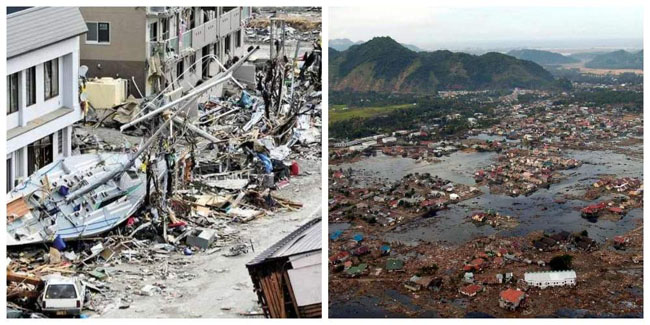
Destruction caused by the 2004 Indian Ocean earthquake and tsunami
Information failures increase lives lost
Information plays a critical role in minimizing the probability of a gray rhino event from becoming a disaster. Information throughputs have five stages—generation, transmission, interpretation, access, and use. An information failure at any of these stages increase the probability of a hazard hit converting into a disaster.
The 2004 Indian Ocean earthquake and tsunami disaster in India was an information generation failure. India did not install seabed sensors in the Bay of Bengal to detect tsunami pressure waves. It was also an information transmission failure as the Indian government was informed about the tsunami soon after it hit the Andaman Islands (see information timeline), which lie close to Sumatra. It took another two hours before the tsunami hit India’s east coast, which was adequate to evacuate fisherfolk inland. Failure to do that was a criminal act of negligence which cost India 10,000 lives.
Information timeline after tsunami wave was generated off the coast of Sumatra, Indonesia
6.29 am |
7.30 am |
8.00 am |
8.56 am |
9.00 am |
10.30 am |
12.00 noon |
5.45 pm |
Quake strikes Sumatra. India Meteorological Department (IMD) knows about it by 6.40 am, but could not analyse data as its computer developed a snag, |
Indian Air Force (IAF) Nicobar informs IAF Tambaram, who inform IAF Chief who alerts Defence Minister. |
Waves lash Machilipatnam, Chennai, Cuddalore, on India’s southeast coast. |
Faxes sent to Secretaries of Department of Science & Technology, Home Ministry, Home Minister. |
Tsunami waves strikes east coasts of India, Sri Lanka. |
Cabinet Secretary calls Port Blair. Secretary of Ocean Development briefs him. |
Crisis Manage-ment Group meets. |
Indian Navy ships dispatched to Andaman Islands. |
The IMD computer being down and not available to analyse the incoming data also made this event an information interpretation failure
The Bhopal gas tragedy was an information access failure. People in Bhopal were sleeping when a highly toxic MIC gas cloud formed at the Carbide plant and drifted slowly downwind towards JP Nagar, Chola Khenchi slums and areas further south. Being heavier than air, the gas cloud hugged the ground, and remained concentrated as the prevailing low wind speed dispersed it very slowly. People woke up and ran to save themselves. But they ran downwind and remained in the gas cloud, inhaling a large amount of toxic MIC gas.
Had they known that they should move perpendicular to the wind direction, the quickest way to get out of a gas cloud, and cover their nose and mouths with a wet cloth as MIC is soluble in water, many thousands of lives may have been saved, and injury would have been less. Not a single Carbide worker died on the as they were aware that running upwind and away from the gas cloud was the best way to save themselves.
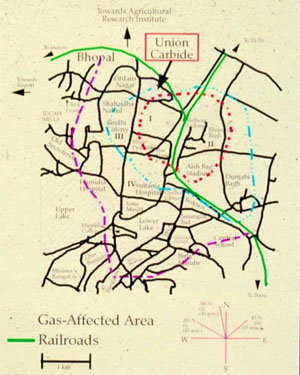 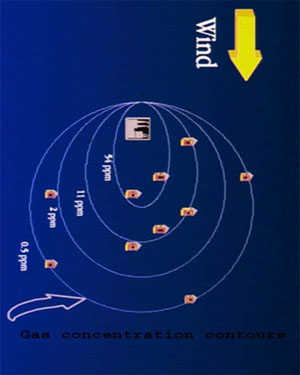
Bhopal site map Movement of the toxic gas cloud
The Ersama cyclone disaster was an information use failure. The National Remote Sensing Agency (NRSA) provided the Odisha government with satellite pictures of the cyclone’s path for 3 days prior to the cyclone making landfall. Yet, the Odisha government did not use this information. If the coastal population had been evacuated, most of the 50,000 people who lost their lives would have lived.
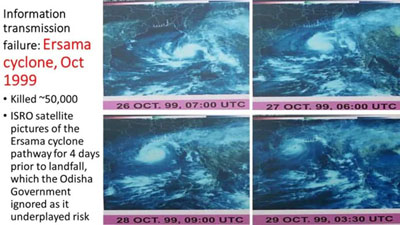
NRSA satellite pictures showing the cyclone’s progress for 3 days before landfall
There are other examples of hazard strike events that became disasters due to information failures. One of them is the 7.5 magnitude (on the Richter scale) Bhuj earthquake that occurred on 26 January 2001. Hundreds of buildings collapsed in several cities in Gujarat killing about 25,000 people and causing a financial loss of Rs 25,000-50,000 crores.
Had the buildings been built to Bureau of Indian Standards (ISI) codes for earthquake resistant structures, far fewer people would have died. BIS codes were available for engineered and non-engineered buildings but were not used, making this event an information use failure.
Bhuj is in a Zone 5 (most earthquake prone) seismic region, making it a high-risk area. Damage to Gujarat Housing Board colonies built to ISI standards, was minimal, but Shikhar Towers, Himgiri Apartments, and 170 other buildings in Ahmadabad crashed as they were not built to ISI standards.
In a quake of similar magnitude that shook Seattle soon after the Bhuj quake happened, only 3 persons died as structures in that city conformed to building standards for earthquakes.
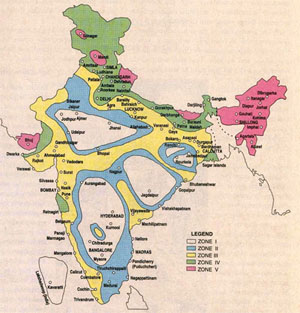
Bhuj in maximum risk seismic zone
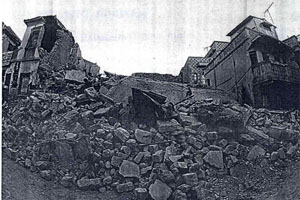
Destruction of non-quake resistant buildings
Lack of emergency response plans and action increase loss of lives
Six elements that constitute emergency response plans and actions (ERPA)—event prediction, warning, hardware and facilities, risk avoidance action by public, emergency response plan (ERP), and the emergency response actions (ERA)—if in place, minimize loss of life when natural or man-made hazards strike. Each missing element increases the probability of the event converting into a disaster and causing great loss of life. A comparison of two cyclones—the 1990 Machilipatnam cyclone that hit the Andhra coast and the 1999 Ersama cyclone—illustrates this point (see Box 7).
Prior information (event prediction) about a hazardous event—its nature, magnitude, hit location and time, lead time between event prediction and hit—helps save lives. Using satellites, IMD tracked the Machilipatnam and Ersama cyclone for several days before they made landfall, and predicted their intensity, landfall location and time accurately. Event predictions for both these cyclones was good.
An effective warning before a hazard hit must fulfil 6 criteria—it should come in time, reach everyone, be appropriate for the event, be unambiguous about the action people should take, sound credible, and be specific to the risk posed by the impending event. The Machilipatnam warning met all these criteria.
The Ersama cyclone warning met the first 3 criteria—it came in time, reached most people on the coast and was appropriate to the event. But it failed the next 3 criteria as it was ambiguous, lacked credibility and was vague. The warning bundled weather and emergency-action information, creating doubt whether people should use their judgement or follow instructions. The warning for the Ersama cyclone was remarkably like the one for a lower intensity cyclone that hit the Ganjam coast 10 days before the Ersama cyclone occurred. As the Ganjam cyclone did not cause much damage or death, going by the similarity between the Ersama and Ganjam cyclone warnings, people thought that Ersama cyclone would be like the Ganjam one. When in doubt people prefer status quo; they stayed home during the Ersama cyclone and were swept away by its giant waves.
The chances of taking risk-avoidance/ mitigation action are higher when people know the risks they face and the choices they have. People in Machilipatnam were ready to evacuate their villages as they had cyclone emergency drills earlier. People in Ersama were not put through such drills and therefore were less aware of the danger they faced and the action they should take to save themselves.
The infrastructure and hardware that Odisha had was highly inadequate--23 cyclone shelters, a police wireless system that died when the cyclone worked itself into a fury, and no backup communication system. Andhra Pradesh had 1,041 cyclone shelters, a police wireless system that could withstood 250 km/hr windspeeds, and a backup active ham radio network.
Odisha had no emergency response plan (ERP) for cyclones and therefore no emergency response action happened in Ersama. Two lakh persons were kept safe in Machilipatnam by evacuating them.
The consequence—50,000 persons died in the Ersama cyclone, even though it happened 9 years after the Machilipatnam cyclone. Less than 1,000 persons died in the Machilipatnam cyclone.
Information failure and lack of emergency response plans will affect India in COVID-19 pandemic
A critical information failure in the COVID-19 outbreak in India is the lack of information on the total number of cases. This can be acquired through extensive testing and good surveillance. But on both counts India’s effort falls below the curve. When cases are detected at an early stage, they can be isolated immediately and treated. This minimizes the time they are in contact with the people, thus reducing infection spread. India has an information generation failure in its COVID-19 control programme.
Several elements of the emergency response to the coronavirus outbreak in India have failed either partially or entirely.
Event prediction: India was forewarned of the coronavirus outbreak in general way in the form of knowledge of previous virus outbreaks, WHO DG’s warning that a viral epidemic could happen anytime, and the Chinese paper on the possibility of a coronavirus outbreak. India should have had a viral outbreak response plan but does not seem to have one.
The Indian government would have become aware of the coronavirus outbreak in China by early-January 2020. Though there may have been some confusion about the possibility of human to human transmission till 21 January, this was dispelled by the last week of January when WHO declared a global health emergency.
Warning: India had about 8 weeks warning time to prepare before the case numbers started going up sharply towards end-March. Kerala prepared for a coronavirus outbreak from January, but the rest of India did not.
Risk avoidance action by people: As people’s understanding of the risk that coronavirus poses and the actions, they need to take to stay safe is sketchy, their response has been varied. While most people are willing to live with the lockdown, migrants want to return to their villages. Some resistance was visible in Surat in the second week of April when migrants rioted as they wanted transport to return to their villages. Physical distancing is difficult for slum dwellers, and for many ordinary people it is an alien concept.
Infrastructure and facilities: India’s public health system is weak. Isolation and ICU beds, ventilators, doctors, and nursing staff are less than what is required for a large COVID-19 outbreak.
Emergency response plan: The only visible document is the ‘Containment Plan.’ It was prepared in the first week of April and covers plans only for local transmission. Plans for community transmission and epidemics have either not been prepared yet or are not available in public domain.
Emergency response action: India’s response action can best be described as jerky. The way the lockdown was declared gives the impression that the lack of preparedness and the enormity of the problem may have made the government panic. No thought was given to how migrants would respond to a sudden lockdown announcement, and the beating the economy would take because of the break in the supply chain of almost all goods and services, the loss of income to farmers, unorganized labour and self-employed. The steps after lifting the lockdown do not seem to have been thought through either.
India’s actions give the impression that it is playing it by the ear and “muddling through,” which is not the best way to handle a health emergency. But India is not alone in doing this. It has the US, GB and many other countries keeping it company.
The author is an environmental engineer with specialization in risk analysis
Published in Firstpost, 26 Apr 2010:
https://www.firstpost.com/health/coronavirus-outbreak-mitigate-impact-gray-rhino-events-future-part-3-8301271.html
Back to Home Page
May 12, 2020
Sagar Dhara sagdhara@gmail.com
Your Comment if any
|
